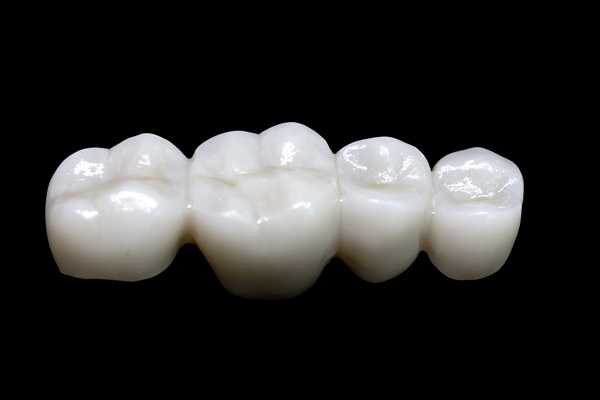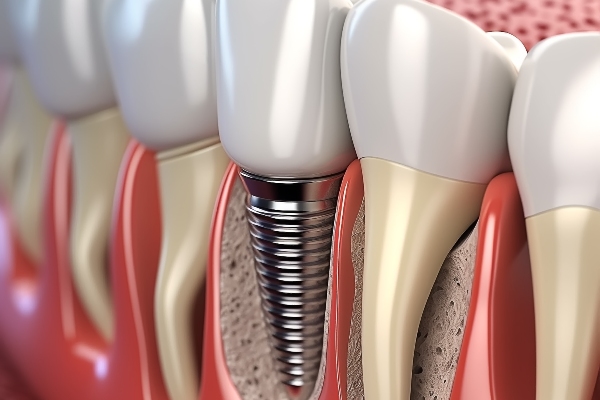What Is a Dental Crown?

Whether you need a root canal or have decay, your dentist may recommend you get a dental crown. However, you might be wondering what a dental crown is. A crown can restore the appearance and function of your natural tooth. It is a way of saving your tooth, which can be preferable to getting an extraction. Read on to learn more about what dental crowns are.
What a dental crown is
A crown is a cap that goes over the top of the tooth. It covers the entire visible portion of the patient's tooth. The crown can be made from one of several types of materials. These materials can include porcelain, metal, composite resin, or porcelain and metal together. The dentist will often choose a material that closely matches the natural teeth. Several things will go into deciding what material to use, including:
- The location and the function of the tooth
- The gum tissue's position
- The patient's preference
- The shade or color of the tooth
Why get a dental crown?
There are several reasons why a patient might need to have a dental crown. One reason is to cover a tooth with a cavity that is too large to get a filling. Worn teeth can also benefit from crowns. For example, patients who grind their teeth may have worn molars, and these can benefit from crowns.
After a root canal treatment, a patient will receive a crown. The tooth's pulp is removed and replaced with a filling inside the tooth. However, the crown will help protect the tooth from being damaged. A poorly shaped tooth can benefit from the protection of a crown as well. In addition, it can improve the patient's overall smile.
Patients who get bridges may also receive dental crowns. A bridge is a set of one or more false teeth. The dentist places a bridge to close the gap left by a missing tooth. A patient may receive a crown on the teeth on both sides of the gap. The bridge can then be attached to each of these crowns.
Crowns and dental implants
Patients who are getting dental implants may also receive crowns. Placing these is a little different than when the crown goes over an existing tooth. Instead, the dentist will place the implant's base in the patient's jaw. The crown is the false tooth that goes over the implant after healing. There is an attachment that connects the implant with the dental crown called an abutment.
Preparing for a dental crown
Preparing for a dental crown
Typically, it will take two visits to prepare for a dental crown. During the first visit, the dentist will examine the tooth that will receive the dental crown. First, X-rays are taken of the tooth and the bone around it. Then, the general dentist will file down the tooth on the top and sides. This process makes space for the crown to sit on the tooth. The amount filed away depends on the type of crown that a patient receives. For example, all-metal dental crowns are typically thinner and do not need as much of the tooth removed as all-porcelain or porcelain-fused-to-metal crowns.
After reshaping the tooth, a paste or putty is used to make a copy of it, also known as an impression. Impressions are made to ensure that the crown will not affect the patient's ability to bite down and chew. The impressions are then sent to a laboratory where the crown is made in a process that takes about two weeks. Meanwhile, the dentist gives the patient a temporary crown to protect the tooth until the permanent crown is ready.
The second visit
At the second visit, the dentist will place the permanent crown on the patient's tooth. Then, they will remove the temporary crown and check to ensure the permanent crown's color and fit. In some cases, the dentist will use a local anesthetic to numb the tooth when they permanently cement the new crown to the tooth.
Same-day dental crowns
In some dental offices, general dentists can make a crown with the proper equipment. While similar to the two separate visit process, during a same-day procedure, the dentist will use a wand-shaped scanning device to take a 3D digital model of the tooth receiving the crown. The digital model is then sent to another in-office machine that carves the shape of the crown out of a ceramic block. In less than 15 minutes, the permanent crown will be ready for the dentist to cement into place.
Visit a dentist today for a dental crown
A dental crown has a variety of uses. It is often used to protect your tooth after a root canal treatment. However, a dental crown can also be used to improve the appearance of your tooth. If your tooth is not attractive, a crown can improve its appearance. If you believe your smile may benefit from one or more crowns, visiting a dentist is your first step.
Request an appointment here: https://www.thegalleryofsmiles.com or call Midtown Dental - The Gallery of Smiles at 7139794127 for an appointment in our Houston office.
Check out what others are saying about our dental services on Yelp: Dental Crowns and Dental Bridges in Houston, TX.
Recent Posts
Teeth that are severely decayed or fractured may benefit from dental crowns, which cover the damaged portions of the teeth, protecting them and restoring their functionality. A dental crown is crafted to fit the remaining portion of the tooth exactly and permanently bond to it. However, crowns are not perfect, and while they are usually…
When a dental practitioner recommends a dental crown, it may not be up to the patient. These dental devices are used to treat various conditions that cause a tooth to need serious work. When a crown is required, it usually means that the tooth it covers is too far gone to be useful, but it…
When a filling is insufficient or a tooth is malformed, the dentist may suggest a dental crown to protect, cover, and restore the tooth's structure. While receiving a crown may seem strange or scary, it is a routine and safe process that can strengthen the teeth, extend their life, and restore the natural appearance of…
For patients in need of dental crowns, there are plenty of options available. Two of the most common choices are porcelain crowns and metal crowns (often with a porcelain overlay fused to the metal). Depending on a patient's specific circumstances, one of these crown types may be the preferred option.Metal crowns have the advantage of…










